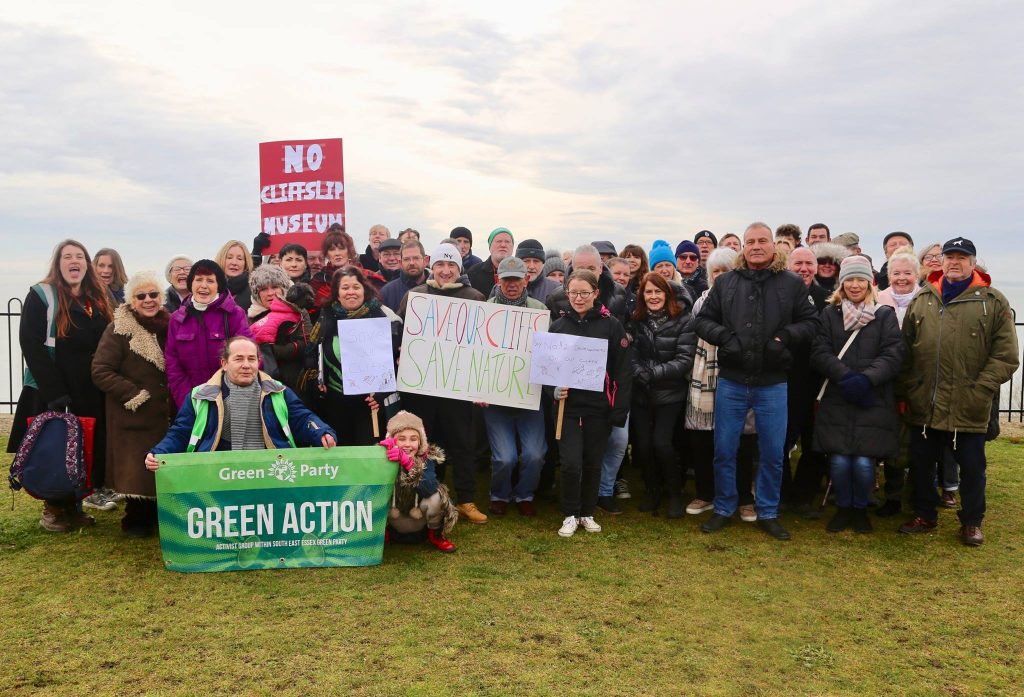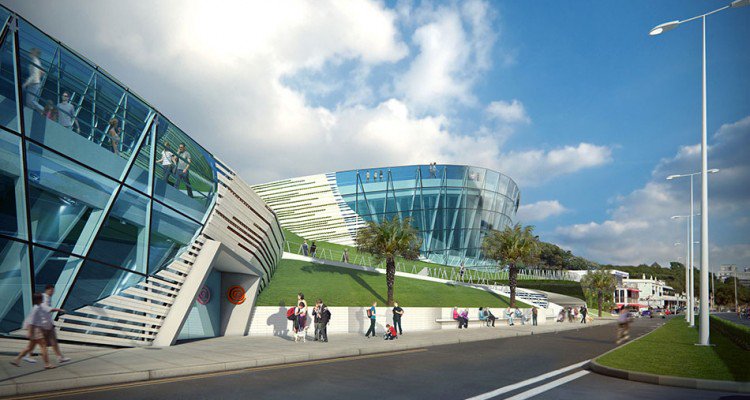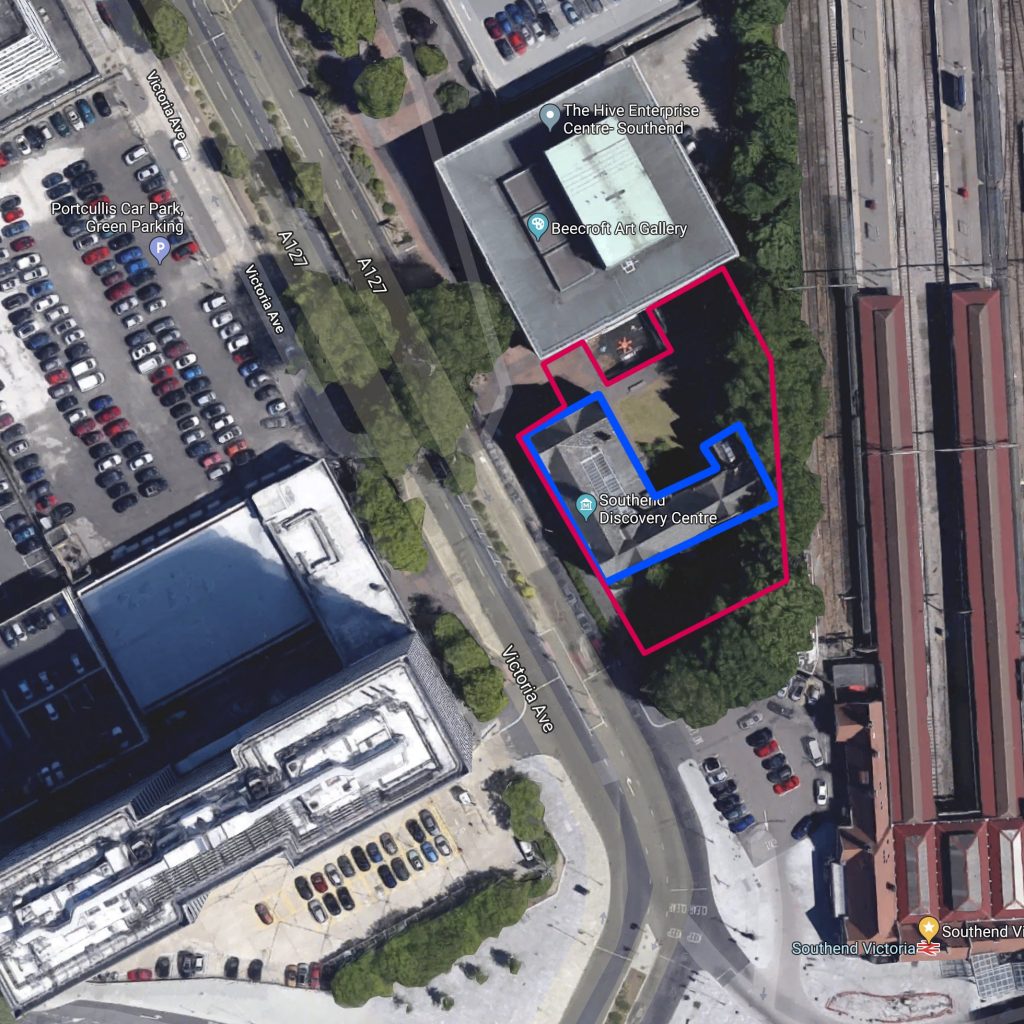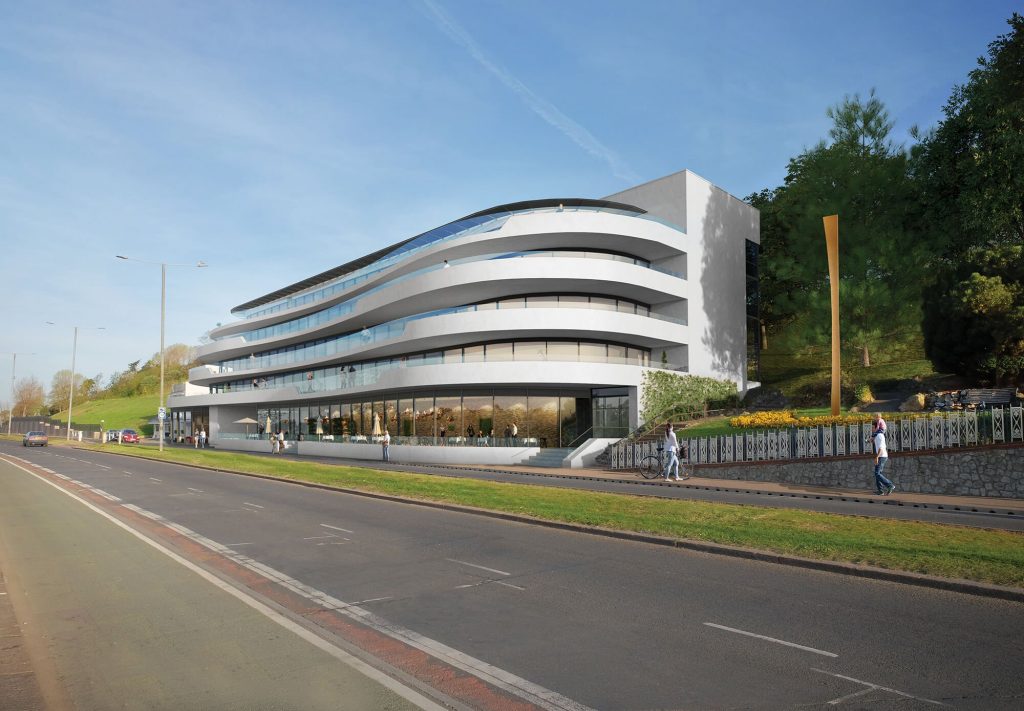UPDATE:
On 18/10/2018, Southend Borough Council finally SCRAPPED their ridiculous plans for a £55M Museum on Green Belt land.
READ THE LATEST PRESS RELEASE HERE:https://southeastessex.greenparty.org.uk/news/2018/10/18/residents-win-campaign-against-cliffslip-museum/
On the 17th December 2017, the South East Essex Green Party officially joined the Campaign to Stop the Development of the Cliffs [CSDC] with a quiet demonstration in Prittlewell Square, Southend.

Attended by over fifty local residents and the local group Saxon King In Priory Park [SKIPP], the event demonstrated the concern felt by local residents over the proposed projects and its wider impact on the area.
The campaign, organised by local residents and facilitated by the South East Essex Green Party and SKIPP, aims to stop the several developments projects planned for the area of Green Belt land immediately adjacent to the Milton Conservation area on the beloved Southend Cliffs.
The area itself, the last stretch of undeveloped coastline between Shoeburyness and Hadleigh, is much valued by residents and visitors alike and contains a large number of old trees.
The current proposals would see a monumental hyper-futuristic Museum and a block of luxury apartments built on the Cliff gardens, an area of protected green-Belt land.THE CLIFFSLIP MUSEUM.

Southend Council reaffirmed it’s dead-horse intention to pursue the monolithic Cliffslip Museum, by recently appointing architectural firm HawkinsBrown Architects to redraw plans.
The £40m project; dubbed the “Thames Estuary Experience” (or ‘Mk.II’ – as the current firm is referring to it) is currently being redesigned due to the council letting previous architectural drawings expire.
The £1.3 million contract was awarded to the London-based HawkinsBrown firm to “tweak” the 107,639sq ft eight-year-old designs previously conceived by AEW Architects.
The incredibly vague documents submitted to the Southend Planning department in 2012 in relation to this development, detail the intention to:
“Form building within cliff slope over seven levels, incorporating museum, planetarium, restaurant, cafe, shop and underground parking with associated access, highways works, and landscaping.”
This document, which was a formal request for a ‘screening opinion in accordance with the Town and Country Planning (Environmental Impact Assesment) Regulations 2011’ was also supported by the following documents:
- Design & Access Statement
- Planning Statement
- Heritage Statement
- Transport Assesment (and subsequent addendums)
- Draft Staff and Visitor Travel plan
- Car Park Managment Strategy
- Flood Risk Assesment
- Flood Plan
- Drainage Strategy
- Various (Fauna and Flora) Ecological Surveys
- Noise Impact Assessments
- Justification Statement
- and other design documents pertinent to the development.
NONE of these documents has been freely published by Southend Council.
MONEY
The amount of money this ‘Experience’ is being quoted to cost has risen over the nearly ten years the Council has been planning it. The current quote is a final figure of £40m – an already excessive figure that does not take into account the cost of hiring two separate architectural firms and the various surveying and assessments conducted on the site by the Council to date.
The figure also does not account for the £3.7million already spent by the council in 2012 to conduct remedial piling work to secure the unstable site.This figure of £40m is disputed by SKIPP, who put the likely total cost of the project around £65-70m, well over double the initial cost.
PARKING
There is a proposed 200-space basement carpark to be built across two subterranean floors underneath the museum building.
With the planned development on the Queensway (Essex Street & Short Street) Car Parks and Seaway Car Parks, central town parking will soon see a dramatic reduction. Just the loss of the Seaway facility alone will see a deficit of 661 spaces.
Many residents are concerned that any further reduction in town centre parking will result in a higher number of visitors illegally parking in residential areas – something the locals are already seeing more of.
SIZE
There is a huge discrepancy in the documents published by the council regarding the size of the development.
There is currently planning permission for a 20,00 sq ft building subject to detailed drawings being published.However, the AEW proposals detailed a massive 107,639sq ft complex recessed into the cliff.
The situation is yet further confused by the new drawings from current architects HB not yet being published, although it is widely believed to be similar in size to the AEW proposals.
Putting the size in perspective – the giant Royals Shopping Centre is 280,000sq ft.Having a complex half the size of the Royals positioned on the geologically unstable ground, fronting a conservation area of amazing beauty sounds like a disaster waiting to happen.
DESIGN
“An exciting new iconic museum for Southend-On-Sea.’Translation: Ultra-modern and Ugly.” – SKIPP
Many residents cite the building’s ultra-modern and garish design as one of the common objections.
The site proposed lies within the Milton Conservation area, and the aesthetic qualities of these proposed buildings do not coexist visually with the neighbouring Georgian buildings.
ENVIRONMENTAL OBJECTIONS
As the local Green Party, many of our primary concerns regard the Environmental impact of building this site.
Our first, and main objection to these proposals is the development of the cliff itself.The land is Green Belt and is not to be built on under any circumstances, especially not in a residential or commercial capacity.
We believe building this ‘Thames Experience’ potentially threatens the remainder of the Clifftown Gardens and sets a precedent for construction of these large-scale buildings on Green Belt land within the borough.
We are also greatly concerned by further deforestation on the site, and the impact the facility will have on local Air and Noise Pollution – issues that Southend currently has a terrible record of.
We also echo the residents’ concerns about the construction traffic and its negative impact on the quality of life for locals.
GEOLOGICAL CONCERNS
The site on which this development is planned, IS geologically unstable.
The site is situated on London Clay and features three powerful underground streams running within the site perimeter.
The site is also a High-Risk flood environment, and any subterranean carpark will flood like clockwork every year.
This regular flooding will also threaten the stability of the foundations of the site, just as it did with Esplanade Pub.
ALTERNATIVE SOLUTIONS
Part of the Council’s insistence on the complex being the mammoth size it is was the apparent need to house the Planetarium, Beecroft Art Gallery, and the Southend Museum with its vast collection – most of which has been in storage for years.
When the plans for the museum were first launched, the Beecroft Art Gallery was housed in the former site opposite the Cliffs Pavilion. The former site was suffering from major structural issues and needed a new site.
With the relocation of the Southend Library to The Forum, after a long campaign by local groups, the Beecroft was moved into its new home in the old library building in Victoria Avenue next to the Museum. A fantastic building, and a wonderful centre-town resource, the current Beecroft Gallery is now also home to the Hive Enterprise centre.
The Southend Museum and Planetarium is currently located in the Central Museum on Victoria Avenue.The Building, which was opened initially as the Free Library in 1905, and repurposed into a Museum in 1981 is a Grade II Listed building and an architectural treasure.
Southend Council argues that many of the Town’s collections of relics and treasures – including the Saxon King Saebert, and the wreckage of the HMS London – has been kept in storage due to the space limitations at the relatively small current site.
The South East Essex Green Party believe that ALL of the town’s treasures should be on display to the public.The relocation of the Museum from its current site risks the eventual loss of one of Southend’s oldest public buildings. We believe that the solution to the current situation lies in two phases:
The restoration and expansion of the current Museum, and the construction of the SKIPP Museum in Priory Park.

Southend Central Museum has the readily available expansion capability and could be tripled in size without building on any Green Belt land. This expansion of the current facility would result in the ability to put the Museum’s vast collection on permanent display in a modern environment, with ready access to the town’s Public Transport routes.
The SKIPP group have been campaigning for a Sutton-Hoo style interactive educational facility on the Brownfield land in Priory Park for years. The SKIPP proposals follow the example of many similar facilities and have consulted the expert advice of many Archaeologists and Historians.
The site, which is within walking distance to the over thirty ‘High-Class’ Saxon and Roman Burial sites, would feature authentic replicas of Saxon huts and would house the remains of King Saebert in a secure replica of a Saxon Great Hall.
The SKIPP proposal in addition to the expansion of the current museum is the most sustainable and cost-effective solution to the current Museum situation.
THE CLIFFSLIP SITE
The initial slip happened in January 2001, and after deforestation works were conducted in Prittlwell Square Gardens, this was followed immediately by the major slip on 14th November 2002.
While the council claim that the slip was not directly caused by the removal of many large trees at the top of the Cliff, many locals are abundantly aware of the cause-and-effect nature of the two events. The large trees, which once inhabited the square above the site were planted when the Clifftown area was built in the 1850s. The trees, with their large extensive root network, stabilised the cliffs in two ways:
- The subterranean root network acted like a piling, which anchored a large part of the upper cliff to the adjacent land.
- The large volume of water removed by the trees ensured that the Clay was not as susceptible to subsidence.
The type of clay that forms the Cliffs is London Clay overlain by Ice Age sand and gravel and river alluvium.
According to a survey conducted by The Essex Field Club, an Essex-based Geology group:
In common with London Clay cliffs elsewhere, especially on the Isle of Sheppey on the other side of the estuary, the [Southend] cliffs are susceptible to major landslips. Before the development of Southend in the nineteenth century, this coastline was under constant attack by the sea and would have consisted of tumbled and vegetated slopes with mudflows and large masses of London Clay moving seawards along slip planes lubricated by groundwater.Without trees, London Clay is only naturally stable at an angle of 10 degrees or less.
Some of Southend’s Cliffs are up to 30 degrees in angle but have a high density of very large old trees with extensive supportive root networks. The proposed site for the ‘Thames Experience’ underwent some major landscaping and structural reinforcement work in 2012. The aim, to stabilise the site from further collapse by piling two rows of steel piles into the ground and creating a retaining wall, has itself come under criticism from SKIPP.
Citing documents that substantiate their claim, SKIPP argues that the non-newtonian nature of the groundwater-saturated clay itself and the creation of this ‘obstacle’ has only led to an increased pressure load on surrounding areas (principally the Esplanade Pub site), and a subsequent increased risk of further slippage to the east and west of the ‘wall’.
THE ESPLANADE SITE.
(Planning reference 15/01842/FULM)

After the recent Public Consultation for the proposed ‘Clifftown Shore’ site, the Council and local papers were keen to express how popular the plans went down with locals.
None of the residents we have spoken to are happy about the current proposals for the Esplanade site.
In November 2015, planning permission was sought for the conversion of the former Esplanade Pub site into a five-story building of 23 flats. Conditional Permission was granted by the council in April 2016.
Since then, the site has been sold to ‘Beyond The Box Property’ who have also acquired the neighbouring Marriotts Fish Bar. Under new plans, 49 apartments will be built across the expanded site in a much larger building comprising twice the number of residential units as was given planning permission for.
While almost all people we’ve spoken with agree that something needs to be done with the eyesore site, most don’t believe that the site should be used for residential homes.
Many of the arguments against these proposals echo the arguments against the Museum proposals:
- The high Flood Risk of the site – with particular regard to the underground car parking facility.
- The Geological instability of the site.
- The greatly extended height of the building, adding an additional three floors – potentially negatively impacting the sea views of neighbouring residents.
- Inadequate Parking provision for residents and visitors, forcing them to park on neighbouring roads.
- Objections to the hyper-modern aesthetic of the proposed building.
But there are many concerns with this site that are completely different to the Museum objections.
Infuriatingly, despite the recent history of the neighbouring plot, the current plans detail the removal of most of the old trees supporting the cliff behind the existing Esplanade Pub.
This shocking lack of foresight could potentially threaten the wider stability of the area to the East of the 2002 cliffslip.
If a subsequent slip at the Esplanade site occurs similar in scale to the 2002 slip, the beloved funicular Cliff Lift railway could be destroyed, and neighbouring Georgian Clifftown Terrace properties could be affected structurally.
Another objection to the proposal from residents is of the nature of 49 properties being created on the seafront.
The developers detail a mix of one, two, and three bedroom properties to be created alongside the two restaurants.Many residents and visitors do not believe that this area of the seafront, historically a leisure and business environment, should be open for residential developments of any kind, and are wary that this building – if constructed – could threaten the leisure aspect of the seafront, as well as setting a precedent for future developments.
Many locals are also angry at the public consultation which some residents were completely unaware of.
The Esplanade Pub served the visitors of Southend for over 100 years as both a restaurant and bar.
To most, the Esplanade Pub was a well-known local music and entertainment venue.
Most famously, on Monday 3rd February 1992, the band Pearl Jam played the Esplanade.
The Esplanade suffered major structural damage, which led to its eventual closure in late-2016.
The structural damage, which most affected the pub’s basement and rear walls, was caused due to the geological movement of the cliffs to the rear of the property.
THE OPINION OF RESIDENTS
We spoke with many locals at the CSDC Demonstration in Prittlewell Square and all have different concerns.
While most fear the loss of the Green Space on the Cliffs will lead to further seafront development, many also were concerned about the additional strain on local parking provision.
Some residents were also concerned that the building of these ultra-modern buildings would negatively affect the value of many Clifftown Terrace properties and that the sea view from these houses could be impeded by the several multi-storey buildings and associated screenings.
“My feeling is that the council is bone dry of money and needs to hawk off the cliffs. We need to understand what’s underpinning this so that we can stop it.”– Julia H. “Hideous, how can they even think this is a good idea!”
– Christine C. “These plans have most certainly not gone down well with the public. I cannot find a single person in favour of this or the Museum and the proximity to the Conservation Area and serious concerns about this level of development on a cliffside geology should be clear indications of the outrageous nature of these levels of development.
– Simon C.
Many residents expressed concerns over the current plans, and most feel completely ignored by the council. After approaching other political parties and councillors for assistance, residents formed the CSDC and turned to the South East Essex Green Party to help, and we were more than happy to assist in this most important of causes.
The campaign will continue with local residents’ interests as the central priority. We intend to oppose these developments by running a large-scale petition and letters campaign, and along with our partners at SKIPP, we shall continue to follow this issue attentively.
“The South East Essex Green Party have been, and always will be, strongly against any development of the Cliffs, especially something of this magnitude where no evidence can be provided to show that it will be cost-effective, culturally sensitive, ecologically and structurally sound, or will actually be a sought-after attraction as Southend Council claims.
It is our view that these proposals are another demonstration of Southend Council’s determination to judge their own success by how many “landmark” projects they conceive. We believe that the further continuation of this dead-horse Cliffslip Museum is a total waste of civic funding and time, especially when more economically and environmentally viable alternatives exist.
We are also greatly concerned by the Esplanade Pub proposals, and we will continue to support the residents in assuring their concerns are heard and addressed.We strongly reject both of these proposals.”
WHAT NEXT?
There will be a public consultation regarding the Cliffslip Museum when the new architectural drawings are submitted and published. We will be running an awareness and opposition campaign when this happens.
The public consultation for the ‘Clifftown Shore’ development has ended, but planning permission is still yet to be granted for the modified drawings. We will be facilitating an opposition campaign when this happens.In the meanwhile, follow the CSDC Facebook page.
Following the recommendation of SKIPP, please also write a letter to the Echo Newspaper and to your Councillors.
Further Reading:
SEEGP Press Release RE Museum.
SKIPP Press Release RE Museum.
Other Sources.Beyond The Box: Clifftown Shore
15/01842/FULM: Clifftown Shore Planning Permission
AEW Architects: Cliff Museum Planning Letter
Essex Field Club: Geological Analysis of Southend Cliffs
Imperial College, University of London: Stability of Natural Slopes in London Clay